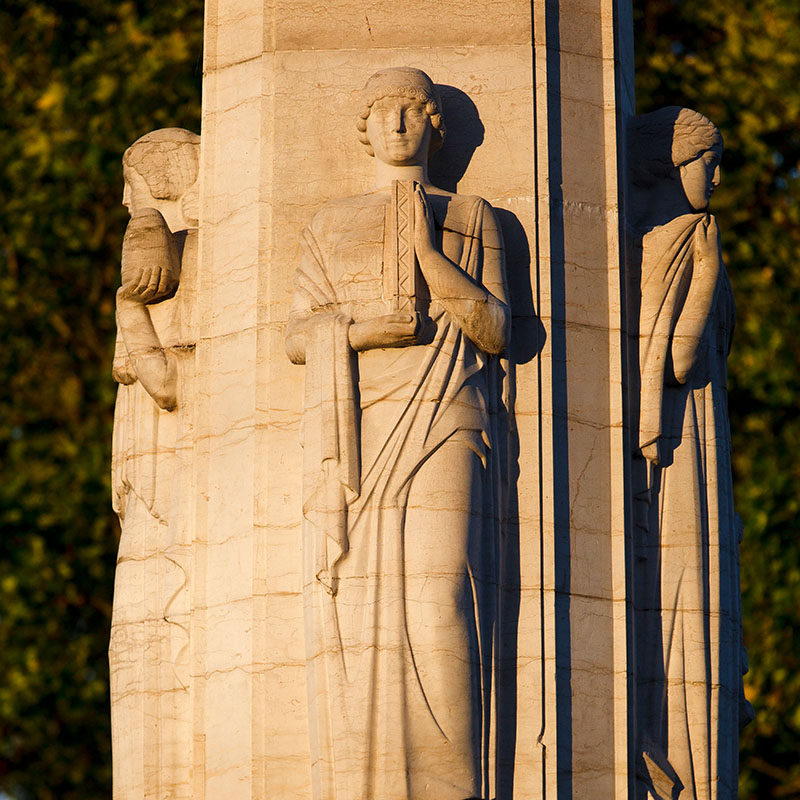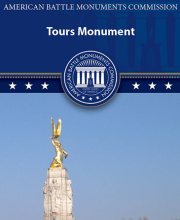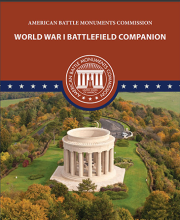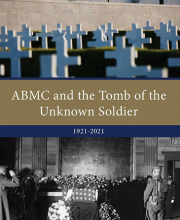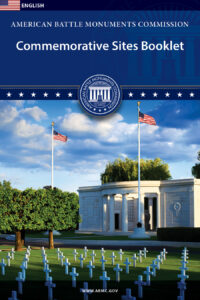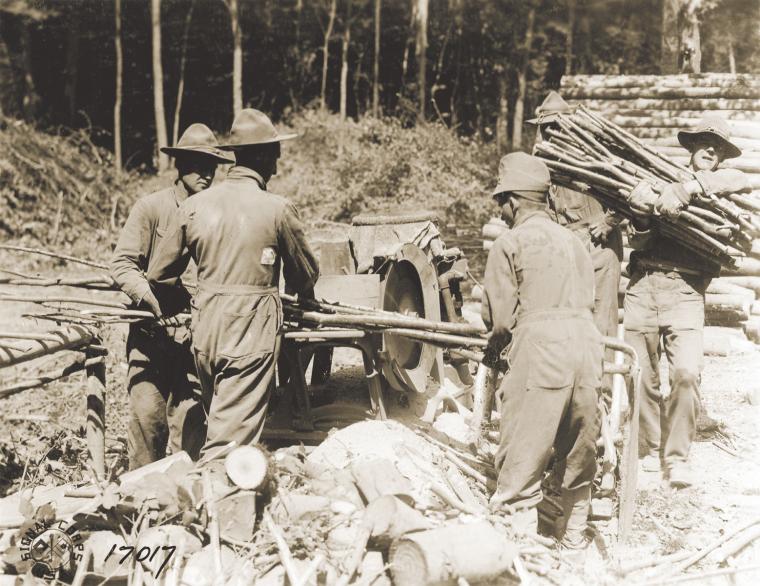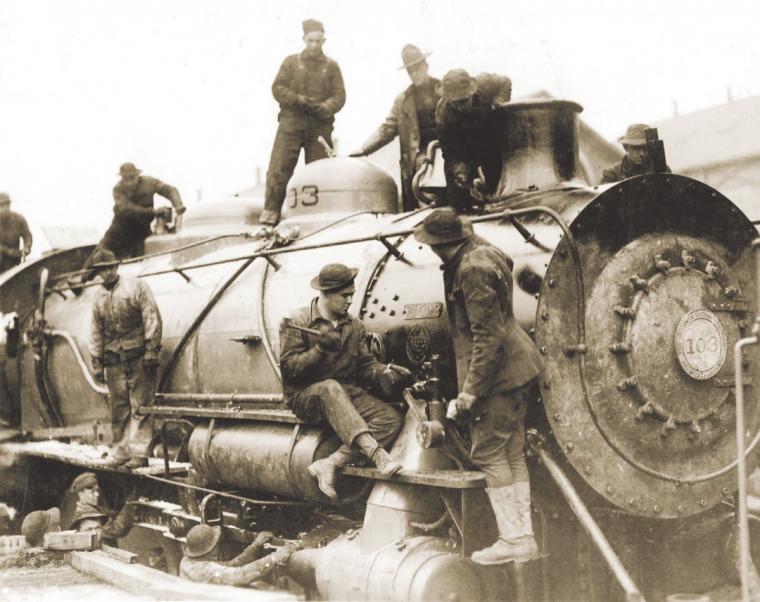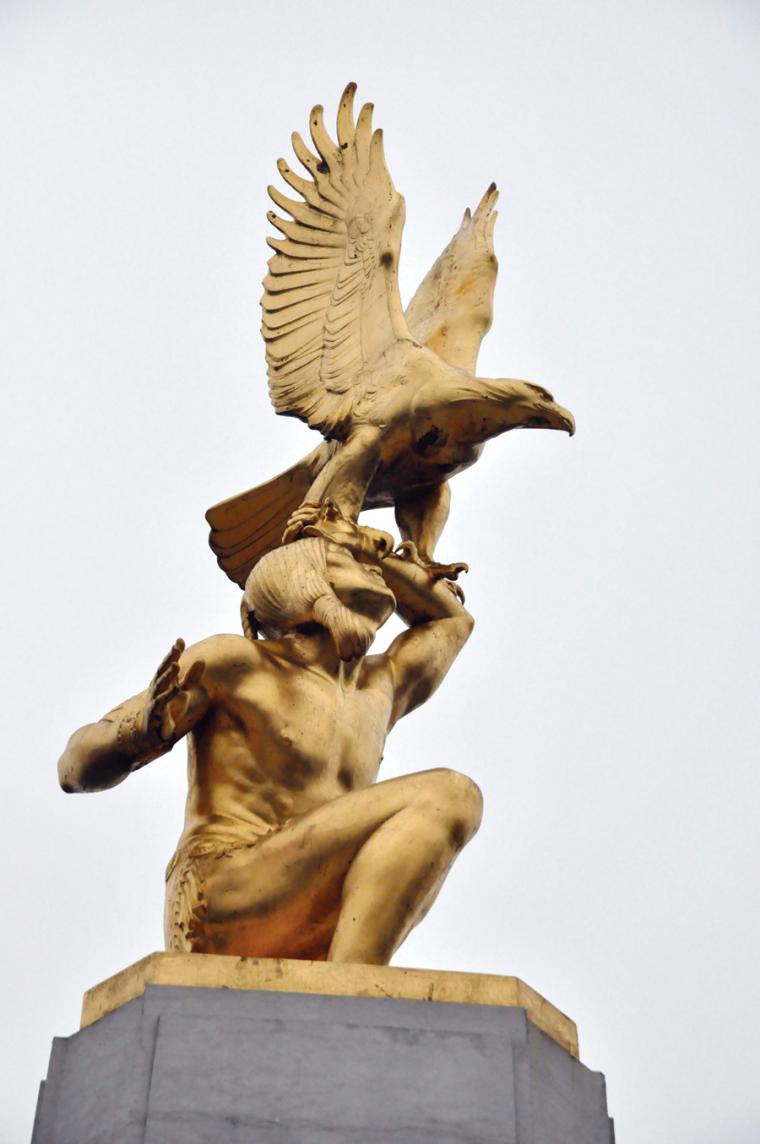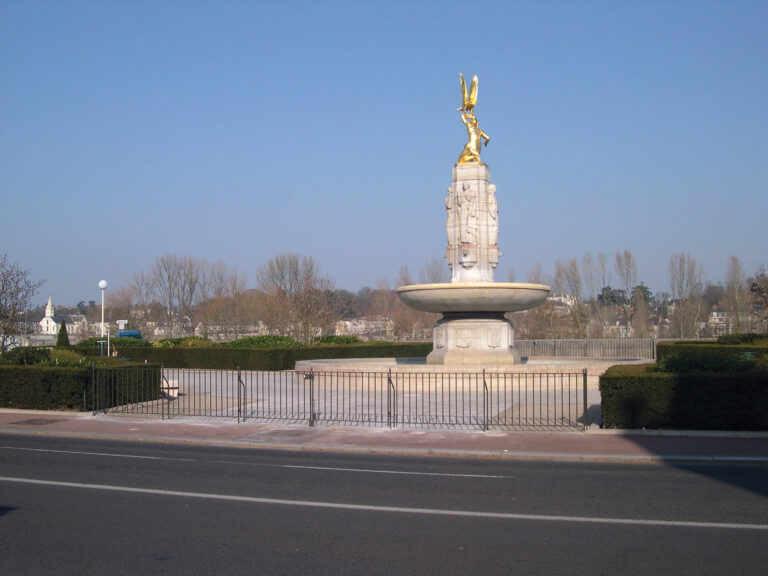The World War I Tours American Monument is located in the city of Tours, France 146 miles southwest of Paris.
The monument commemorates the efforts of the 650,000 men who served during World War I in the Services of Supply (SOS) of the American Expeditionary Forces (AEF) and whose work behind the battle lines made possible the achievements of the American Armies in the field. The city of Tours was its headquarters during the war.
It is located just east of the southern end of Pont Wilson which crosses the Loire River in prolongation of the main street (Rue National) of Tours, and consists of a handsome fountain of white stone with a gold gilded statue of an American Indian holding an eagle. The surrounding area was developed into a small park by ABMC.
The fountain’s column between the lower and upper basins displays sculptures of the coats of arms of Bordeaux, Brest, Is-sur-Tille, Le Mans, Neufchâteau, Nevers, St. Nazaire, and Tours. Important installations of the SOS were located in those cities during the war.
Four sculptured figures appear on the column above the upper basin. They represent the four principal divisions of the SOS: Administration, Construction, Procurement, and Distribution. A bronze sculpture gleams from the top of the monument. Successful execution of those functions enabled the combatant forces to concentrate on defeating the enemy.
By the time of the Armistice on November 11, 1918, a total of 2,057,907 American troops had come to European soil. Among them were almost 645,000 soldiers and 24,000 civilians of the SOS.
Here are examples of SOS accomplishments:
- Constructed almost 1,000 miles of standard-gauge railway tracks;
- Assembled more than 1,500 locomotives and 18,000 rail cars with parts shipped from the United States;
- Managed hospitals with a capacity of 192,844 beds.
General John J. Pershing, commander of the AEF, said this about the Services of Supply in his final report:
Magnificent efforts were exerted by the entire Services of Supply to meet the enormous demands made on it. Obstacles which seemed insurmountable were overcome daily in expediting the movements of replacements, ammunition and supplies to the front, and of sick and wounded to the rear.
The Tours Monument stands on Ave. André Malraux about 300 meters east of the southern end of Pont Wilson, the bridge across the Loire River.
 An official website of the United States government. Here's how you know.
An official website of the United States government. Here's how you know. 